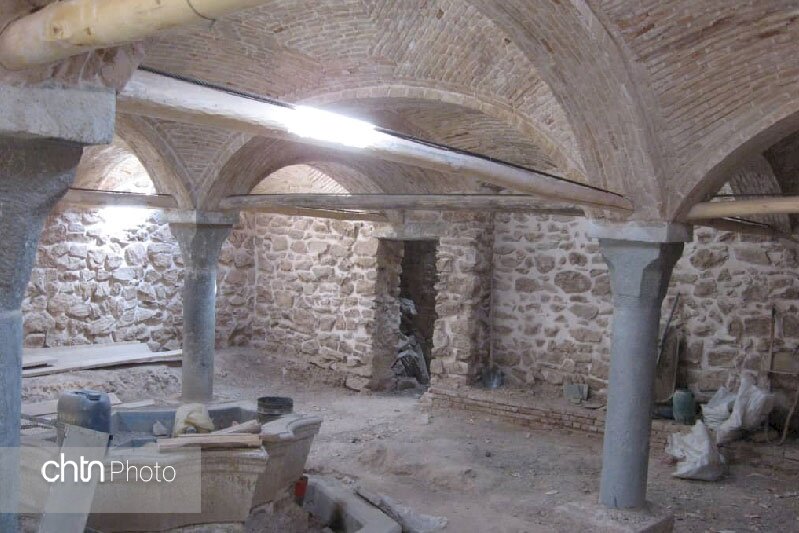Historical bathhouse in central Iran undergoes restoration

TEHRAN – Parts of Hammam-e Okhovat have undergone some rehabilitation works. The Pahlavi era (1925-1979) public bathhouse is located in Najafabad of Isfahan province.
Strengthening and repairing the bathhouse’s walls, which have been seriously damaged over the years, are essential parts of the project, Najafabad’s tourism chief Alireza Habibi announced on Sunday, CHTN reported.
The monument was once fully restored in 2006 on a budget of three billion rials ($71,400 at the official exchange rate of 42,000 rials per dollar), the official added.
However, due to its abandonment, parts of this privately-owned structure have been torn down, he explained.
The historical public bathhouse has been inscribed on Iran’s national heritage list, the official said.
Bathhouses or ‘hammams’ in Iran were not only places for bathing and cleaning up. They had a social concept for people who gathered at these places weekly.
It was a place where people talked with each other about their daily life and shared humor and news. There are still bathhouses in Iranian cities but they do not have their social function anymore since most people have bathrooms in their homes due to the modern lifestyle.
Some cities had separate bathhouses for men and women. They were usually built next to each other. However, there were some bathhouses, which were used by men and women at different times of the day.
There were also male and female public bathhouses; at daybreak, a longhorn (booq-e javaz) was blown to announce that the bath was ready. Men came to the baths from daybreak till the afternoon. Women could use the bathhouses from then to sunset. In some cases, five days were allocated to men and two days to women.
Persian literature is full of proverbs, narrations, and folk stories about bathhouses, which indicate the importance of the place in the past time.
ABU/AFM

Leave a Comment